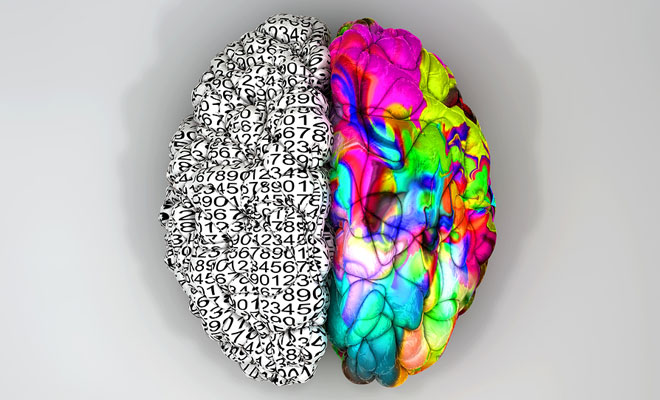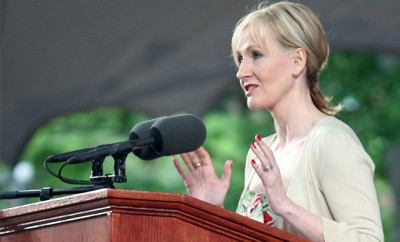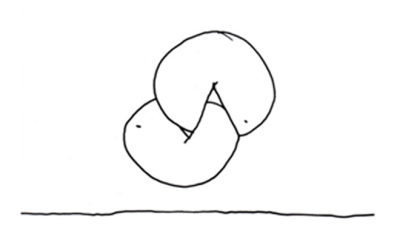
When Two Tribes Meet
Yes, Leonardo da Vinci was both artist and inventor. True, Brian Cox was in that band before he gave it all up for the Large Hadron Collider. But in general, art and science seem to eye each other uncomprehendingly. Medical research charity the Wellcome Trust has long tried to make artists and scientists work fruitfully together by funding collaborations. Can the divide ever be breached? I talked to four scientists and four artists who have worked together to find out.
The artist and the geneticist
Just before 9/11, Marc Quinn did a portrait of Sir John Sulston, one of the genetic scientists who decoded the human genome. “At the moment this divisive attack happened, John’s work and this portrait were suggesting that we are all connected – in fact that everything living is connected to everything else,” Quinn says.
It was a radical departure for portraiture. Certainly few sitters contribute, as Sulston did, a sample of DNA from his sperm. That sample was cut into segments and treated so they could be replicated in bacteria. The bacteria was spread on agar jelly and placed under glass, forming a portrait about A4 size. “Some say it’s an abstract portrait, but I say it’s the most realistic portrait in the National Portrait Gallery,” says Quinn. “It carries the instructions that led to John and shows his ancestry back to the beginning of the universe.”
“Well, yes,” says Sulston, “but DNA gives the instructions for making a baby, not an adult. There’s a lot more to me than DNA.”
A decade after their collaboration, Quinn and Sulston are meeting in the artist’s east London studio. Did the collaboration change each man’s attitudes towards the other’s discipline? “I still think science is looking for answers and art is looking for questions,” says Quinn.
“Science simply means finding out about stuff, but in that process science is the greatest driver of culture,” says Sulston. “When you do something like decode the human genome, it changes your whole perspective. In terms of genetic manipulation we’re not just looking for answers but modifying what’s there.”
That is very much the focus of Quinn’s recent work. Last year, his White Cube show featured a sculpture called Catman, depicting Dennis Avner, who has been tattooed to look like a cat, and another of Allanah Starr, a transsexual woman who, according to the blurb, “has changed her body into the idealisation of femininity even though she also has a penis”. Quinn says: “They’re about the fantasy of being someone else – you can be a man or a woman, anything. We’ve always had those fantasies and now science is making them possible.”
Quinn says Sulston’s portrait was important to his later work. He shows us his painting of a human iris in the studio. “I’ve made a lot of work since, to do with eyes and fingerprints, because we are controlled so much more by scans of abstract data about ourselves.” As for Sulston, since he finished working on the human genome, he has become concerned with ethical questions to do with the application of his work to police DNA databases and civil liberties.
The collaboration came about when Quinn was commissioned by the National Portrait Gallery, with the support of the Wellcome Trust, to do Sulston’s portrait. “John did all the work,” says Quinn. The artist, at least, decided on the portrait’s frame. “People can see themselves in the reflective surround, which highlights that we’re all connected – one of the great messages of the Human Genome Project.
“Because it’s true, isn’t it, that our DNA is 90% the same as bananas’?” asks Quinn. “Well, no, actually it’s more like 50%,” clarifies Sulston, who won the Nobel prize in 2002. “Our DNA is about 90% the same as other mammals.” Our material connection with everything else, not just our world but in the universe, clearly appeals to Quinn: no wonder that his Iris painting from 2009 is subtitled We Share Our Chemistry with the Stars.
In Quinn’s most famous work, Self (1991), he made a sculpture from a cast of his head filled with nine pints of his own deep-frozen blood. It is carefully maintained in a refrigeration unit, reminding us of the fragility of existence. Every five years since 1991, he has replaced what he calls a “frozen moment” on life support, with a new transfusion of his own blood. He calls it an ongoing project, while the portrait of Sulston is suspended in time for ever; once the Nobel laureate dies, there is something of him preserved in this picture, a code from which, perhaps, he could be cloned.
The poet and the speech scientist
“I once overheard someone say, ‘Its mother was a crab,'” says Valerie Hazan, professor of speech sciences at University College London. “Can you think of a situation in which that would be used? I often ask my students this.”
Hazan’s point is that hearers often work imaginatively to supply a context to a discombobulating utterance, to annex incomprehensible or uncanny speech into the more soothing realm of the understood. But there’s another point, too: “Certain utterances stick in your mind: a contorted use of language not planned in any way is often most memorable.”
This resonates for poet Lavinia Greenlaw. “Those are the things I’m trying to recreate in my work,” she says. “I’m trying to get at that unconscious manipulation of language. I’ve become more and more interested in particular voices at the edge – especially overheard, fragmentary voices.”
For her latest project, Greenlaw spent two years eavesdropping on passengers at railway stations. She even has a Twitter feed to record gnomic utterances, such as her recent favourite: “trifle for grownups”. She wrote monologues based on these eavesdroppings, got actors to voice them, and – with the help of a sound designer – cut them into little snippets. But the results weren’t just what she heard. “I started with the overheard and then I moved into interior voices, which clearly I imagined. So I started with something very real and then it became about heightening it.”
The result is called Audio Obscura. The project started at Manchester’s Piccadilly station and will next month appear on the concourse of London’s St Pancras station. Visitors put on headphones and, alone, engage in what she calls “dark listening” to voices in the crowd – fragments of narratives, glimpses of interior worlds.
For Hazan, this project bears comparison with her own research interests. “In my work, I’m realising more and more that you can’t take things out of context and that if there isn’t an obvious one, hearers supply it.” Recently, Hazan recorded 40 speakers in 12 pairs trying to exchange information about a “spot the difference” picture. “In one of them, one talker heard the other via a three-channel noise vocoder. But even with minimal pitch and acoustics, that kind of very degraded speech can be given a context by the hearer.”
What of that mysterious crab sentence utterance we started with? “I heard it in an airport,” says Hazan. “The wheels of a trolley were splayed out, and it couldn’t move forwards and back. It was odd to overhear that, but what it shows is how we try desperately to make sense with semantically anomalous sentences.”
Is there any parallel between the two women’s disciplines? Hazan says: “As a scientist you have to be creative to really think what is the question. I didn’t think a poet had to be methodical.”
Greenlaw says: “Poets are often thought of as vague and wishy-washy, but, like scientists, they can’t be. A poem can be about vagueness, but it has to be in precise relationship to vagueness if it’s any good. I’m ridiculously analytical. Poetry, though, is an unsettlement – unlike you, Valerie, I’m not drawing connections.”
“But we’re both manipulating reality to understand it,” says Hazan. “What makes a good scientist is someone who can see beyond the obvious.”
The photographer and the physiologist
When Mary Morrell and Catherine Yass collaborated on a project called Waking Dream, each hoped to unravel what, if anything, essentially happens in the transition from sleep to wakefulness. Physiologist Morrell, now professor of sleep and respiratory physiology at the National Heart and Lung Institute, Imperial College London, wanted to give a scientific account of that transition.
Turner-shortlisted artist Yass says she came to the collaboration with a lot of “what ifs”. “What if we could be said at some moments to be both asleep and awake? What if we were both dreaming and in reality at the same time?”
The collaboration started after Morrell received an email from Yass asking if she could photograph and film patients at the sleep unit to capture this transition. “I thought it sounded impossible, but agreed to let her try.”
In the corridor outside Morrell’s office at the sleep and breathing unit of London’s Royal Brompton Hospital is a lightbox photograph of one of Yass’s subjects, Selina, depicted as she came from rapid eye movement (REM) sleep to wakefulness. It’s one of a series Yass took during the collaboration. Each image invites the viewer to decide whether she is asleep or not.
“I was interested in the limitations of my instruments and the impossibility of representing something,” says Yass. “I enjoy that in photography – how it can point to a failure?”
“Initially, I didn’t get that at all,” laughs Morrell. “Failure pleasurable?” Morrell was also blindsided by the idea that the two women were going to be funded to collaborate on a project that had no obvious outcome.
“Essentially, once we got funding for the project from the Wellcome Trust, we were allowed to find nothing, which to me was incredible.” Maybe that freedom, Morrell wonders, can give artist and scientist alike the chance to think outside the box.
Morrell shows me one of the results, hanging on the wall of the Royal Brompton’s sleep unit. It’s a lightbox in which a furl of lurid pink seems to unroll from the mouth of a black-and-white MRI scanner. “I love this because it looks like that Rolling Stones tongue,” says Morrell. Yass says she was trying to highlight the discrepancy between a medium associated with truth, and images which are illusions.
“What came out of the project for me was how you look dictates the answer you get,” says Morrell. “You can measures sleep with electrodes, MRI scans, measuring respiratory patterns and whichever way you choose changes your result.”
Both women say working on Waking Dream broadened their horizons. “Catherine challenged my preconditioned ideas,” says Morrell. After the collaboration, she took a photography course. Some photographs from mountaineering jaunts hang on the walls of her office.
“I was inspired by your attitude,” says Yass. “I came with a tentative idea and you would say, ‘This is how you can do it.'” Could Yass imagine having been a scientist? “I used to think about being a brain surgeon, but I wouldn’t trust myself in a million years. In terms of science, I’ve always been daunted by the amount of knowledge a scientist needs, but I love the idea that there’s a lot of knowledge and someone like Mary has it.”
“I’m not sure I do,” says Morrell.
The theatre director and the neuroscientist
“If you hear a recording of someone whispering in your ear,” says theatre director David Rosenberg, “you can convince yourself you felt their breath.”
“Expectation is everything,” agrees Professor David McAlpine, director of London University’s Ear Institute. “Your brain fills in so much it’s not funny. You’ve got a very narrow bandwidth by the time you get to your ears and your eyes. The rest is artificial, filled in by that expectations machine – your brain.”
For his latest theatre piece, Electric Hotel, Rosenberg wanted to play with some of these auditory ideas, to tease his audience with sound illusions. So he approached neuroscientist McAlpine, whose research work into brain mechanisms for spatial hearing and detecting sounds in noisy environments proved key to the effects Rosenberg wanted to achieve. “We were trying to create a very intimate experience for an audience in a show which they see from a distance and also through glass,” says Rosenberg.
Electric Hotel initially took place in a decommissioned gasworks behind London’s King’s Cross station. As darkness fell, audience members were given special headphones and asked to sit before a four-storey set with glass-fronted chambers representing hotel rooms in which dancers played the parts of hotel guests, couriers and cleaners.
Those headphones supplied binaural recordings to each spectator’s ears. Rosenberg, along with sound designers and composers Max and Ben Ringham, made a complete score made up not just of music but of everyday sounds. Soft noises were heard thrillingly close to audience members’ ears: a woman pulling on a robe after a swim, the plumping of a pillow. The illusory effect was that the individual spectator, far from being in a crowd of other audience members, was in the room with them. While these noises sounded as though they were taking place on stage, in fact they were part of a pre-recorded soundtrack to which the dancers’ choreographed moves were fitted.
What does binaural mean? “It’s two-eared hearing, and involves extracting information you couldn’t have from one ear,” says McAlpine. “There are binaural recordings using two microphones at an appropriate distance apart used within a dummy head to try to reproduce effects of your normal hearing,” says Rosenberg.
McAlpine recalls the most sophisticated binaural illusion he ever heard. “I was at Dolby’s headquarters in San Francisco. They made me put on headphones, close my eyes and then you hear you’re in an aeroplane and you crash into the ocean. I really felt a sense of the whoosh of water and the sense of going up on to a sandy beach. Those sensations were my brain filling in the experience from what it heard.”
Rosenberg says a key moment of Electric Hotel was another illusion. “The sound moved out into the audience, and the audience became confused as to whether what they’re hearing was part of the performance or the actual audience surrounding them.”
It sounds like the aural application of a Brechtian alienation technique. Is it? “Totally. It was very important in a show which is essentially you alone with the performers, and then suddenly you have a moment when you recognise the audience around you.”
Rosenberg’s next theatre project will put his audience in the dark. “The show will enfold you when the lights go out. The audience will wear headphones, and their imaginative experience will involve creating environments they can feel they’re a part of without the distraction of vision.”
“Your eyes are in charge but not always,” says McAlpine. “If it’s dark, then you have to do imaginative work. People think of visual scenes, and there are gestalt principles for understanding how that is put together. But there’s also an auditory scene which is less robust than the visual scene, and how it’s put together is still not very clear.” Perhaps, then, Rosenberg’s next play could be a rare case of art helping scientific enquiry.
First published at theguardian.com.







